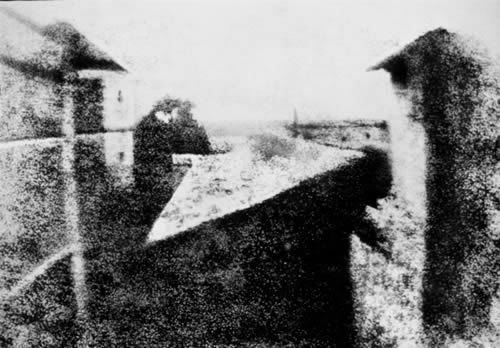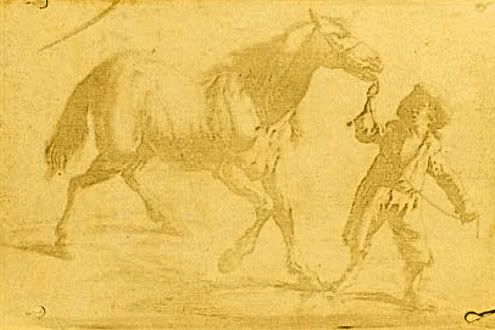Joseph Nicéphore Niépce began experimenting with optical images in 1793, and progressed on to his initial photographic experiments by 1816. By 1824 Niépce had met with some degree of success in copying engravings using a camera obscura to project the images onto glass plates coated with a light-sensitive varnish.
an early Niépce photograph of a 17th century Flemish engraving, showing a man leading a horse.
In June or July 1826 he took the first ever true photograph, titled View from the Window at Le Gras, at his family’s country home in the village of Saint-Loup-de-Varennes, Burgundy.
 View from the Window at Le Gras
View from the Window at Le Gras To photograph the image, Niépce dissolved bitumen in lavender oil, a solvent often used in varnishes, and coated a sheet of pewter with the mixture, he then placed the coated pewter sheet inside a camera obscura to capture the picture. After eight hours he removed the pewter plate and washed it with lavender oil to remove the unexposed bitumen. Niépce called his process Heliography or "sun writing".





No comments:
Post a Comment